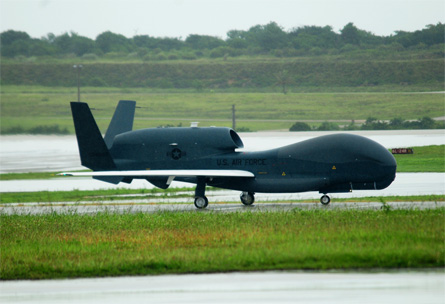The Pentagon has issued a report highly critical of Northrop Grumman's RQ-4 Global Hawk, the troubled unmanned aerial vehicle (UAV) slated to replace the U-2 for high-altitude reconnaissance. The operational test and evaluation (OT&E) report, issued 27 May, slams Global Hawk Block 30 as being able to accomplish its mission only 27% of the time.
"Since their worldwide deployment began last August, the Block 20/30s have performed quite well," read a Northrop-issued statement. "Today, the deployed system are performing at better than 90% Mission Effectiveness." Northrop also noted that low effectiveness rates are common among new aircraft types.
Four low-rate initial production (LRIP) examples of the Block 30 were provided to evaluators for testing. "Due to poor air vehicle reliability, operational units are not able to consistently generate or maintain long endurance sorties to provide persistent ISR support," the report reads. The report notes that operating at low operational tempos, provided adequate spare parts and maintenance time, the aircraft can provide 40% capability. The air force requires 55% capability to declare the aircraft operationally effective.
Northrop Grumman said there were no surprises in the report but would not confirm the details beyond noting that the company has made significant progress since the evaluation period.
 |
|---|
©USAF |
"We don't see any major show stoppers," said Northrop executive Ed Walby in a February interview, two months after the December, 2010 evaluation concluded. "We expect to get an average grade, as most programs do."
Also in February the air force cut its order of the follow-on Block 40 from 22 to 11, using the money saved to fix "significant" deficiencies with Block 30 payloads; those payloads, the Enhanced Imagery Sensor Suite (EISS) and Airborne Signals Intelligence Payload (ASIP) received mixed reviews in the OT&E.
Source: Flight International
















